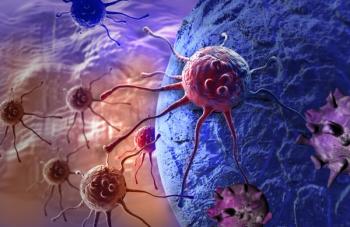
Nurse Practitioners and Physicians' Assistants May Play Critical Roles in Future of Oncology Care
A new study of collaborative oncology practice models showed that the greater use of nonphysician practitioners (NPPs) led to an increase in productivity for the practice and was satisfying for both physicians and the NPPs. This provides one potential solution for the predicted shortage of oncologists in the next decade.
A new study of collaborative oncology practice models showed that the greater use of nonphysician practitioners (NPPs) led to an increase in productivity for practices and was satisfying for both physicians and the NPPs. This provides one potential solution for the predicted shortage of oncologists in the next decade.
In 2007, ASCO projected that by 2020 the demand for oncologists will increase by 48%, while the total number of practicing oncologists will increase only by 14%. Furthermore, by this time, the number of Americans aged 65 and older will likely double and there will be roughly an 80% increase in the number of people living with cancer.
A group, led by Elaine L. Towle and others both at ASCO and a group called Oncology Metrics, which is a division of Altos Solutions in California, undertook a study that was published last week in the Journal of Clinical Oncology (DOI: 10.1200/JOP.2011.000385). The researchers’ aim was to describe model practices for collaboration between oncologists and NPPs; document the impact of collaborative practice models on practice productivity and efficiency; and document the impact of collaborative practice models on patient, oncologist, and NPP satisfaction.
Methods
The study began in early 2009, with a survey of 226 US oncology practices that assessed the degree of integration of NPPs across a variety of practice types, and also asked questions about how these NPPs were integrated into the practices. The results from this survey were used to select a group to be included in the study, with an emphasis on representing the diversity of practice types and NPP integration.
33 practices were selected for a second survey, and data was collected over a six-month period. Information was gathered about practices’ units of service provided, total expenses, and total drug expense. Satisfaction with the extent of NPP/physician collaboration was also collected from NPPs, physicians, and patients.
Conclusions
The authors of the paper cite five important conclusions that can be drawn from the study. First, in general, oncology patients are aware when an NPP is providing care to them and are generally satisfied with the experience in collaborative practice models. Second, practices in which NPPs work with all physicians in the practice and see a wide variety of patients show a 19% increase in productivity compared with practices in which NPPs work with just one or a few physicians. Third, in the initial, larger survey group, the reimbursement model appeared to affect the degree to which practices were collaborative. Fourth, the authors found little correlation between the perception of workload in practices and the quantified productivity.
The most critical conclusion the study reached was that both physician and NPP satisfaction with collaborative practice models was high, which indicates that this may be one important solution for the projected coming shortage of oncologists.
Newsletter
Stay up to date on recent advances in the multidisciplinary approach to cancer.





















































































